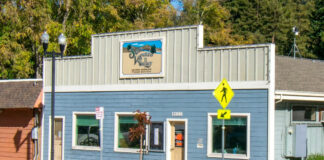The Santa Cruz County Planning Department has published an online, comprehensive guide to the planning regulations, permit fees, estimated building costs and financing of accessory dwelling units (ADU’s), also known as granny flats, in-law units or “Tiny Homes”, for the unincorporated areas of the county.
This effort to encourage and inform homeowners on what the permit requirements are to build an ADU or convert existing space into a legal housing unit is aimed at addressing the housing affordability crisis throughout the county generally, and the shortage of smaller, rental units specifically.
The aim of the online permit guide is to be “user friendly and as comprehensive as possible guide to county codes and building permit process,” said Paia Levine, the county’s assistant planning director and lead staff for the document and website development.
After expressing a need for caution, the County planning commissioners gave their approval to the online guide at their regular meeting on May 23. The need for caution, and perhaps the need for big asterisks here and there indicating a proposed project may be subject to additional code requirements not included in the guide.
“The county has been sued before over public information guides that leave something out and ends up resulting in big surprises to the applicant that, after more in-depth review a project is denied due to other code requirements not mentioned in the guide,” said Mike Muth, 1st District Planning Commissioner said.
Especially in the San Lorenzo Valley, represented by 5th District Planning Commissioner Renee Shepard, there are many special requirements related to riparian corridors and sensitive, Sand Hills habitat that may impact a permit application, Shepard said. Shepard also pointed out that many homes in the San Lorenzo Valley are served by site specific septic systems and private wells, and have different requirements than those served by water and sewage treatment districts.
Levine responded to these warnings from the planning commissioners that the online guide is intended as a general guide to planning and development of ADU’s and it does note that special circumstances may require additional review. Levine also said feedback from builders on the guide has been very positive.
Levine explained later in an interview with the Press Banner that many of the previous restrictions on ADU’s have been relaxed due in part to new state laws that mandate certain building code and planning restrictions be waived to encourage ADU’s, such as the previous requirement for sprinkler systems for fire safety, and reduced parking requirements for certain situations.
“The building code and planning requirements have been relaxed quite a bit from what they were. In many cases where you previously could not build a unit- now you can,” Levine said. Levine cited an example that before the rules were streamlined to conform to state law, if a parcel less than one acre was served by a septic, an ADU was not allowed. Now, after certification from the Department of Public Health that the existing septic system can handle the additional load, a permit is possible.
Levine said the financing guide included in the online information demonstrates how long it will take the cash flow from rents to recover the investment in the ADU should be particularly useful to homeowners. Levine mentioned that ADU’s “have been a little tricky to finance with traditional second mortgages, but I’m pleased to say Bay Federal Credit Union is working on it”.
The county’s new ADU permitting program includes a financing incentive to build ADU’s that will be rented at “below market rate rents” for relatively low-income households. The county will provide a loan up to a $40,000 that is completely forgiven after 20 years, in exchange for a deed restriction that limits rents to what a household making 80 percent of median income can afford. The household income limits depend on the size of the household, and the number of bedrooms, and is explained in detail in the online ADU Forgivable Loan Program regulations.
Included in the online guide are links to two, standalone documents: ADU Design Guide and ADU Basics, that can be downloaded and printed by users. In the ADU Basics publication, a frequently asked question (FAQ) about ADU’s mounted on wheels is answered.
Under California state housing law, anything that is permanently mounted to a chassis with wheels is a Recreational Vehicle (RV) approved only for occasional and seasonal use and cannot be used as a dwelling unit.
“We’re also hoping the new regulations will encourage those who have been thinking of converting space in existing structures to build legal ADU’s, and encourage those with currently illegal and unpermitted rental spaces to get them upgraded and permitted,” Levine said.
The County’s Accessory Dwelling Unit Development Guide is available at www.sccoplanning.com/ADU.













